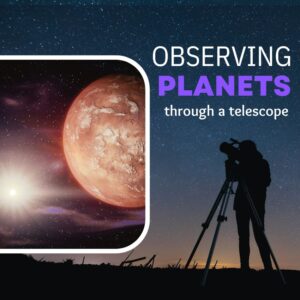This site contains affiliate links to products. I may receive a commission for purchases made through these links.
Ever looked up at the night sky and felt a sense of awe and wonder? If so, you’re not alone. Astro-tourism, the act of traveling to gaze at the cosmos, is on the rise. It’s an experience that’s as old as humanity itself, but with modern technology, it’s never been easier to explore the stars.
I’m here to guide you through your first steps into this fascinating world. Whether you’re a seasoned traveler looking for a new adventure, or a stargazing newbie with a thirst for the unknown, this guide will provide you with the essential tips to kickstart your astro-tourism journey.
So, strap in, and prepare to embark on a journey that’s truly out-of-this-world. With the right preparation and a dash of curiosity, you’ll be exploring the cosmos like a pro in no time.
Why Astro-Tourism is Growing in Popularity
Astro-tourism is seeing an unprecedented increase in popularity. This astral fascination is not new to us. Humans have been stargazers since time immemorial. But why is it experiencing a surge now? Few key factors are influencing this growing trend.
Firstly, the advancement of technology plays a pivotal role. Today’s gadgets, especially mobile phones, come with built-in technology like GPS and augmented reality features. Apps like Stellarium and Star Walk turn these devices into planetariums, guiding astro-tourists to breathtaking cosmic scenes. These tech tools have certainly made it easier for anyone to start their journey into astral exploration.
Secondly, people are now more inclined towards experiential travel. Rushing from one landmark to another is not the definition of travel anymore. Travellers now seek immersive experiences. They want to connect with the surroundings, learn about different cultures, and create stories, not just memories. No wonder the tranquil beauty of a starlit sky far away from city lights is becoming a sought after experience.
Thirdly, there’s an increased awareness about the importance of dark skies. Light pollution is a real problem. Artificial lights have stolen away the night sky from many of us. Astro-tourism brings attention to this issue and generates interest in preserving our dark skies.
Each factor brings layers of complexity and allure to the field of astro-tourism. It’s not just about looking up; it’s about diving deep into our natural and technological worlds. Such an intrigue is bound to spark more interest in astro-tourism.
Looking ahead, it’s evident that astro-tourism’s popularity is not just a passing trend. Instead, it’s evolving into a significant branch of the tourism industry. After all, the sky is not the limit. It’s just the beginning.
Benefits of Astro-Tourism
Now that we’ve unpacked the rising popularity of astro-tourism, let’s delve into the benefits of this unique way of traveling.
Engaging with Nature
Firstly, astro-tourism connects individuals with the natural world in a profound way. Gazing at a sky teeming with stars provides a sense of calm and peace. It’s similar to how you feel when you swim in the ocean or hike in the forest. It’s authentic. It’s real. And it reminds us of the magnificence of our universe.
Preserving Dark Skies
Astro-tourism has additional ramifications beyond just personal enjoyment. It can actually help to preserve dark skies. As I mentioned earlier, light pollution is a growing global issue. With the advent of astro-tourism, we’re shedding light (figuratively, not literally) on the importance of combating light pollution. We give value to preserving dark skies, which in turn, supports efforts to control light pollution.
Supporting Local Communities
On a socio-economic level, astro-tourism can be a catalyst for growth in often underserved rural communities. When astro-tourists flock to dark sky areas, they bring with them a revenue stream. This income can bolster the economy of small towns, creating jobs and opportunities.
Educational Opportunities
Let’s not forget about the educational aspect of astro-tourism. Understanding the night sky can improve our knowledge of science, geography, and even history. Seeing the constellations or Milky Way with your own eyes provides a real-world context for learning that words in a textbook can’t quite capture.
Physical Health Benefits
Believe it or not, there are also physical health benefits linked with astro-tourism. Spending time outdoors, even at night, can have positive effects on your sleep cycle and overall wellbeing.
Astro-tourism has paved the way to a deeper connection with the universe, offering a unique way to engage with nature, preserve our environment, boost local economies, foster learning, and improve physical health. As we look ahead, it’s evident the future of astro-tourism is promising. Keep reading as we turn our attention to practical tips and essentials for your first astro-tourism experience.
Choosing the Right Destination for Astro-Tourism
Deciding on the perfect location for your astro-tourism adventure is key. It’s not just about finding a place with a clear sky. It’s about finding a locale that offers minimal light pollution, favorable weather conditions, and an incredible view of the cosmos. Knowing what to look for in a destination can elevate the experience substantially.
Light Pollution is a critical factor. Areas far from city lights are your best bet. National parks, secluded beaches, and mountain regions often fit the bill. These places provide darker skies, making it easier to see the stars, planets, and other celestial bodies clearly.
The weather also plays a significant role in astro-tourism. Places with less cloud coverage and mild temperatures at night are most preferred. Remember, each location will have its optimal times during the year so keep seasons in mind while planning your trip.
Don’t overlook the significance of local cultural heritage related to astronomy. Some communities have been studying the stars for centuries and can offer unique insights and perspectives about the night sky. These experiences can make your astro-tourism trip much more educational and immersive.
The International Dark Sky Association designates specific places around the world as International Dark Sky Places. These locations adhere to strict light pollution controls and are therefore fantastic options for astro-tourists. As of now, there are more than 130 designated places across the globe.
Here’s a glance at a few such popular places:
| Location | Country | Description |
|---|---|---|
| Death Valley National Park | USA | It’s one of the darkest places in America due to its remote location and dry climate. |
| Aoraki Mackenzie | New Zealand | It’s known for its remarkably clear skies. |
| Pic du Midi | France | This observatory offers night sky viewing sessions to tourists. |
Essential Gear for Astro-Tourism
Embarking on an astro-tourism adventure requires planning and packing the right gear. It’s not all about choosing those stellar destinations, but it’s equally important to come equipped with the necessary tools to maximize your cosmic experience.
First and foremost, a good telescope is the lifeblood of any astro-tourist’s expedition. There’s a wide range of options available out there, from simple handheld telescopes to high-tech computerized models. Depends on your level of expertise and budget constraints, you’ll need to choose a telescope that suits your needs. Investing in one with superior optics will enhance your sky-gazing experience, revealing the night sky in all its teeming glory.
Another must-have gear is a star map. Navigating the cosmos might sound like a daunting task, especially for beginners. A detailed star map makes this task easier, elucidating the constellations and celestial bodies that decorate the night sky. Furthermore, there are a bunch of smartphone apps available these days that provide real-time celestial mapping, making stargazing a breeze.
Pack comfortable and warm clothing. The best time for star-gazing is usually during cooler periods at night, and locations with low light pollution can get pretty chilly. Insulated jackets, thermal inner wear, gloves, and a warm hat are advised.
Flashlights with red filters, comfortable seating like a foldable chair or a blanket, a notebook, and a camera for astrophotography are other items you shouldn’t leave off your astro-tourism checklist.
In the realm of gadgets, astronomy binoculars deserve a special mention. They’re a great tool for beginners and serve as a less bulky alternative to telescopes. A good pair of astronomy binoculars can bring the night sky to life, revealing distant galaxies, star clusters, and nebulae.
Some of us might dismiss the importance of bringing the right gear, but trust me, having these essentials will greatly enhance your astro-tourism experience.
Let’s now move on to discuss useful tips for beginners in astro-tourism which involve some important methods of stargazing and what to expect on your first astro-tour.
Tips for a Successful Astro-Tourism Trip
Now that we’ve covered the must-haves for equipment, let’s dive into practical advice to help you get the most out of your astro-tourism experience.
Planning is Essential
It’s quite simple; the more you plan, the better your trip will be. Familiarize yourself with the layout of the sky you’ll be observing. Using a detailed star map will allow you to identify various celestial bodies and constellations. Consider what you want to see or accomplish during the trip and plan accordingly.
Acclimating Your Eyes to the Darkness
Did you know it takes a considerable chunk of time for our eyes to adjust to darkness fully? Yep, it takes anywhere between 20-30 minutes! This is known as dark adaptation. While you’re waiting, avoid looking at bright lights as this can reset the clock. As a tip, use a red flashlight if you need to navigate or read something as it causes less disruption to your night vision.
Taking Advantage of Mobile Apps
There’s a plethora of apps available for smartphones that can enhance your astro-tourism experience. These apps can help you identify stars, planets, constellations and other celestial bodies. They serve as your guide in the cosmic ocean.
Practicing Patience
Astro-tourism is a great way to learn patience. Sometimes, weather conditions or light pollution may hinder your view. Other times, you may have to wait for hours to catch a glimpse of a meteor shower or a certain celestial event. But trust me; it’s worth the wait!
Conclusion
Astro-tourism is a journey that can take you beyond the stars. It’s all about planning, sky familiarity, and smart use of technology. Remember, patience is your best friend when you’re waiting for that perfect celestial event. Weather and light pollution might be obstacles, but they’re part of the adventure. So, arm yourself with these tips and essentials, and you’re ready to embark on an unforgettable astro-tourism experience. Let the stars be your guide and let the universe surprise you.
Frequently Asked Questions
What is the main focus of the article?
The article provides insightful tips on how to make the most out of an astro-tourism trip, such as planning, familiarizing oneself with the night sky, and harnessing the power of mobile applications.
How important is planning for astro-tourism?
Planning is particularly important for astro-tourism. Without careful planning, one may miss out on spectacular celestial events or struggle with viewing conditions due to weather or light pollution.
What role do mobile apps play in astro-tourism?
Mobile apps can significantly enhance the astro-tourism experience. They can provide maps of the night sky, identify celestial bodies, and alert you to upcoming astronomical events.
Why is patience mentioned as a necessary trait for astro-tourism?
The practice of patience is stressed in astro-tourism because viewing conditions can be impacted by weather and light pollution. Moreover, certain celestial events may require observers to wait for hours.
Can light pollution affect astro-tourism?
Absolutely. Light pollution can severely hamper one’s ability to observe celestial bodies clearly. Thus, it is advisable to choose a viewing spot away from city lights when planning an astro-tourism venture.




